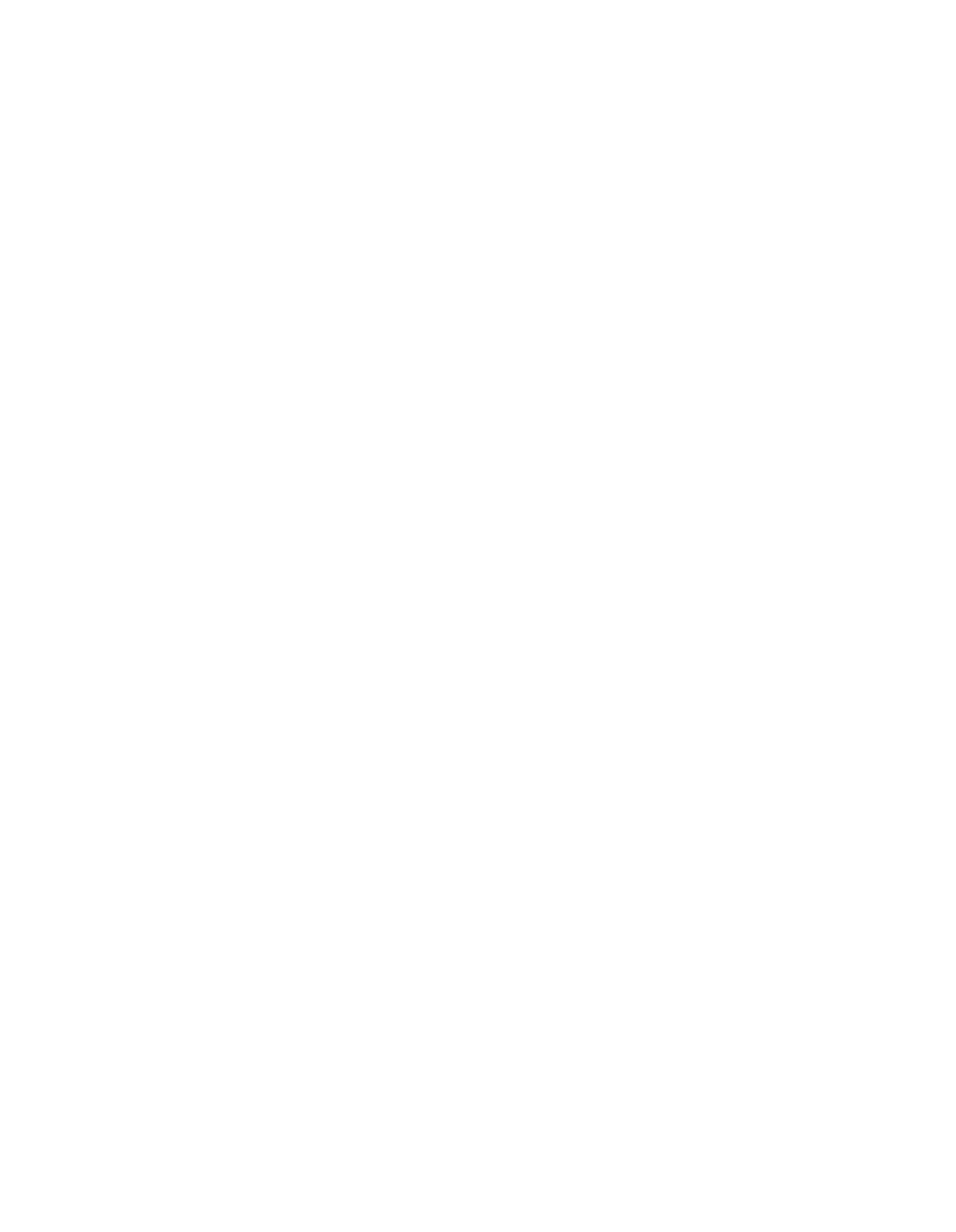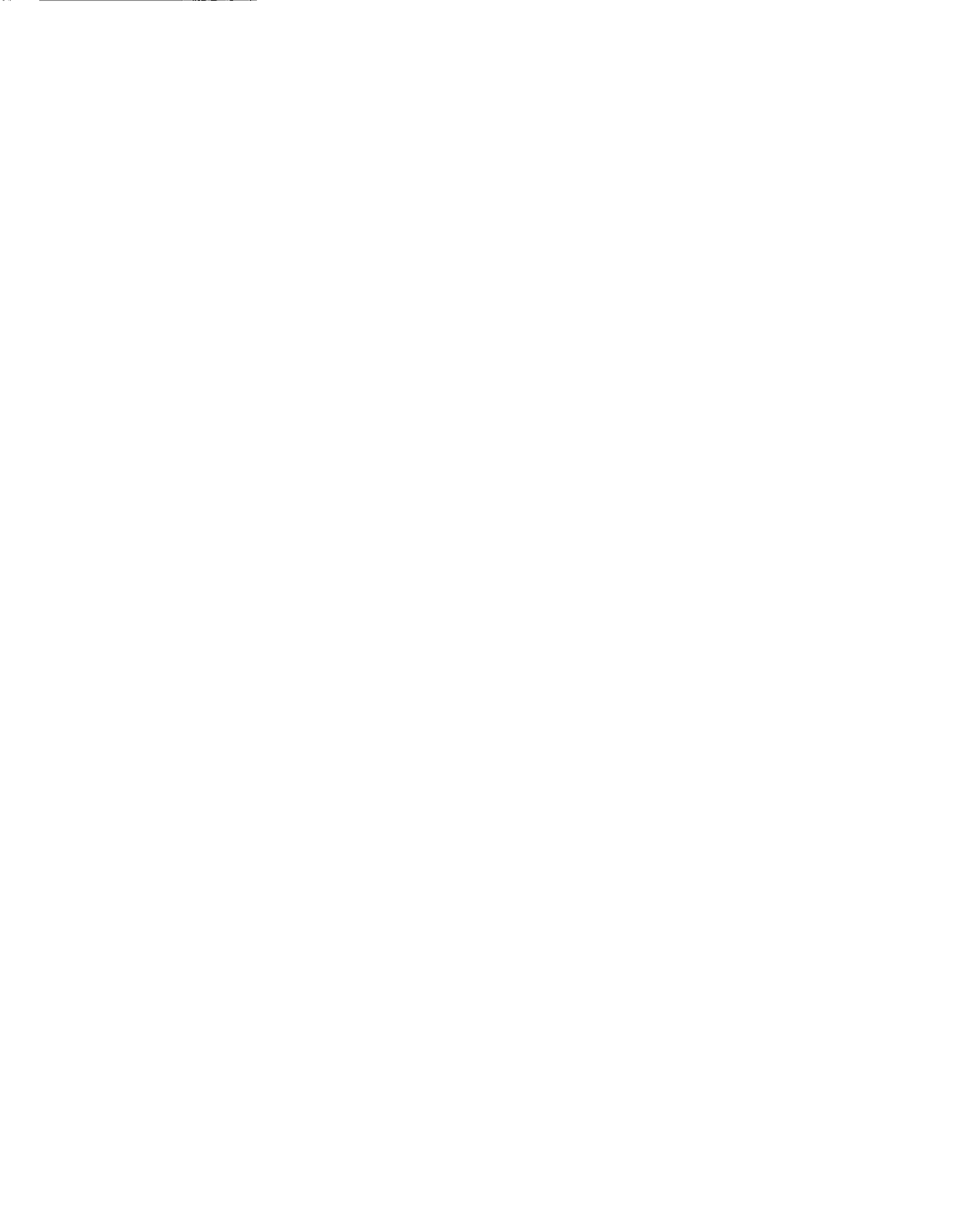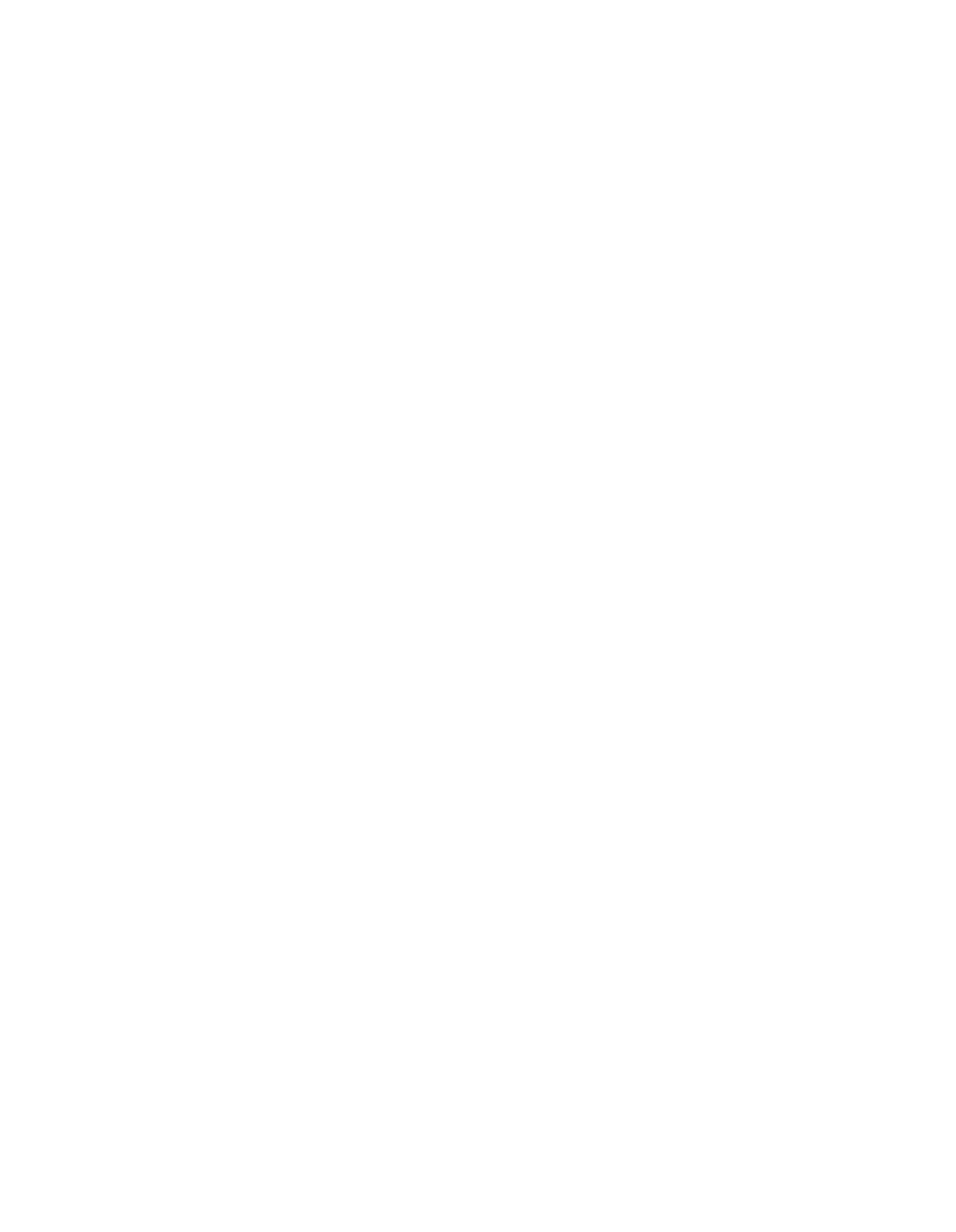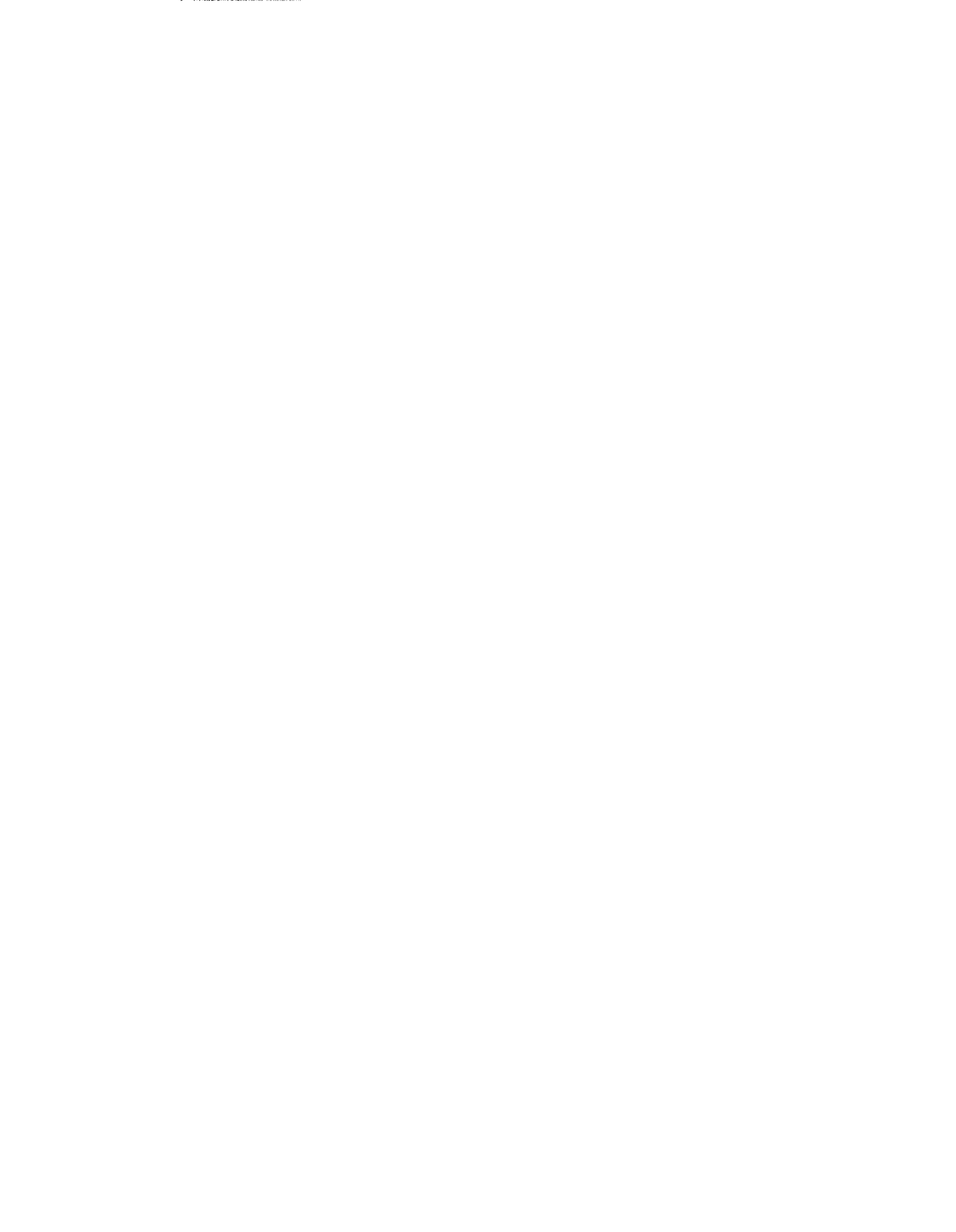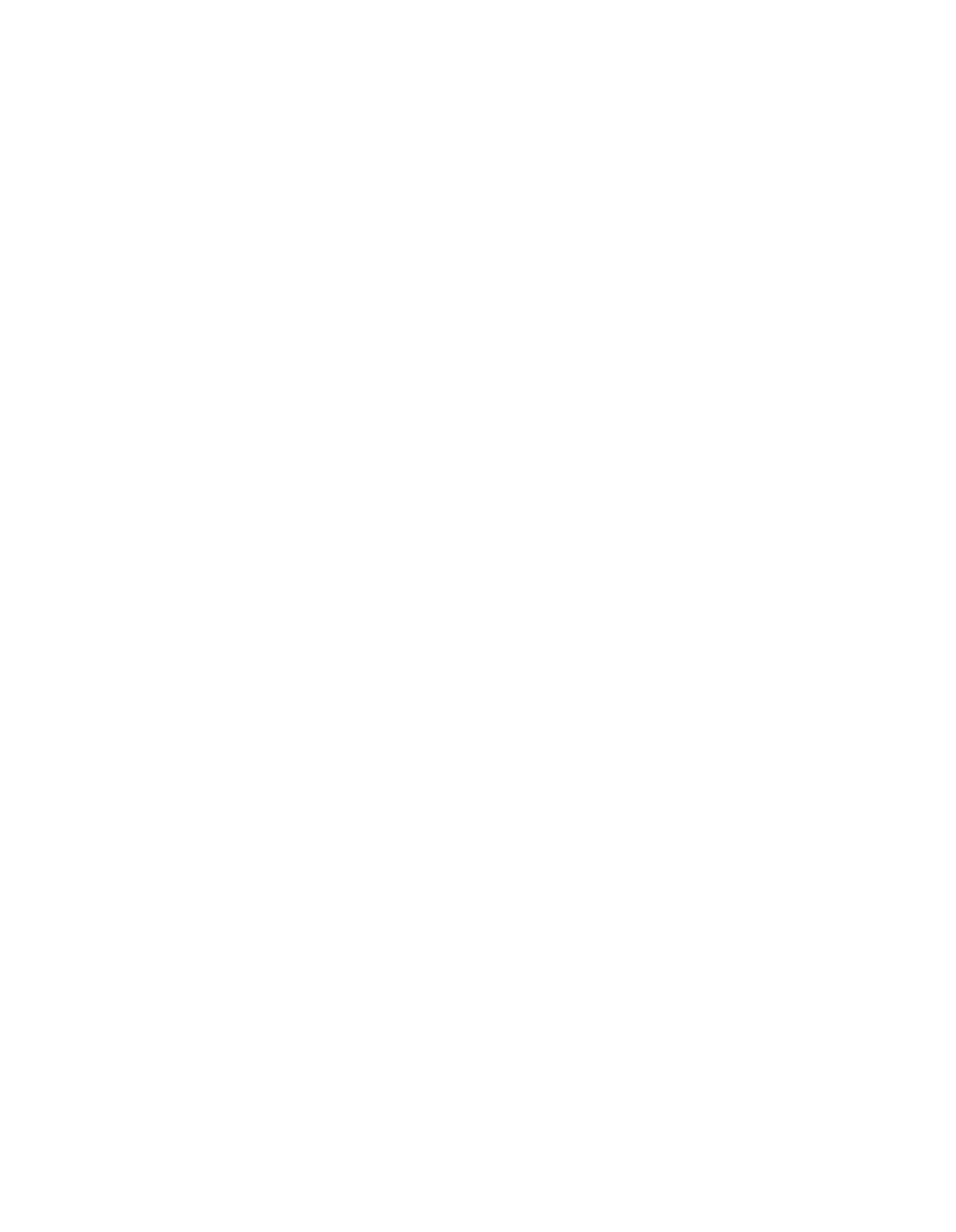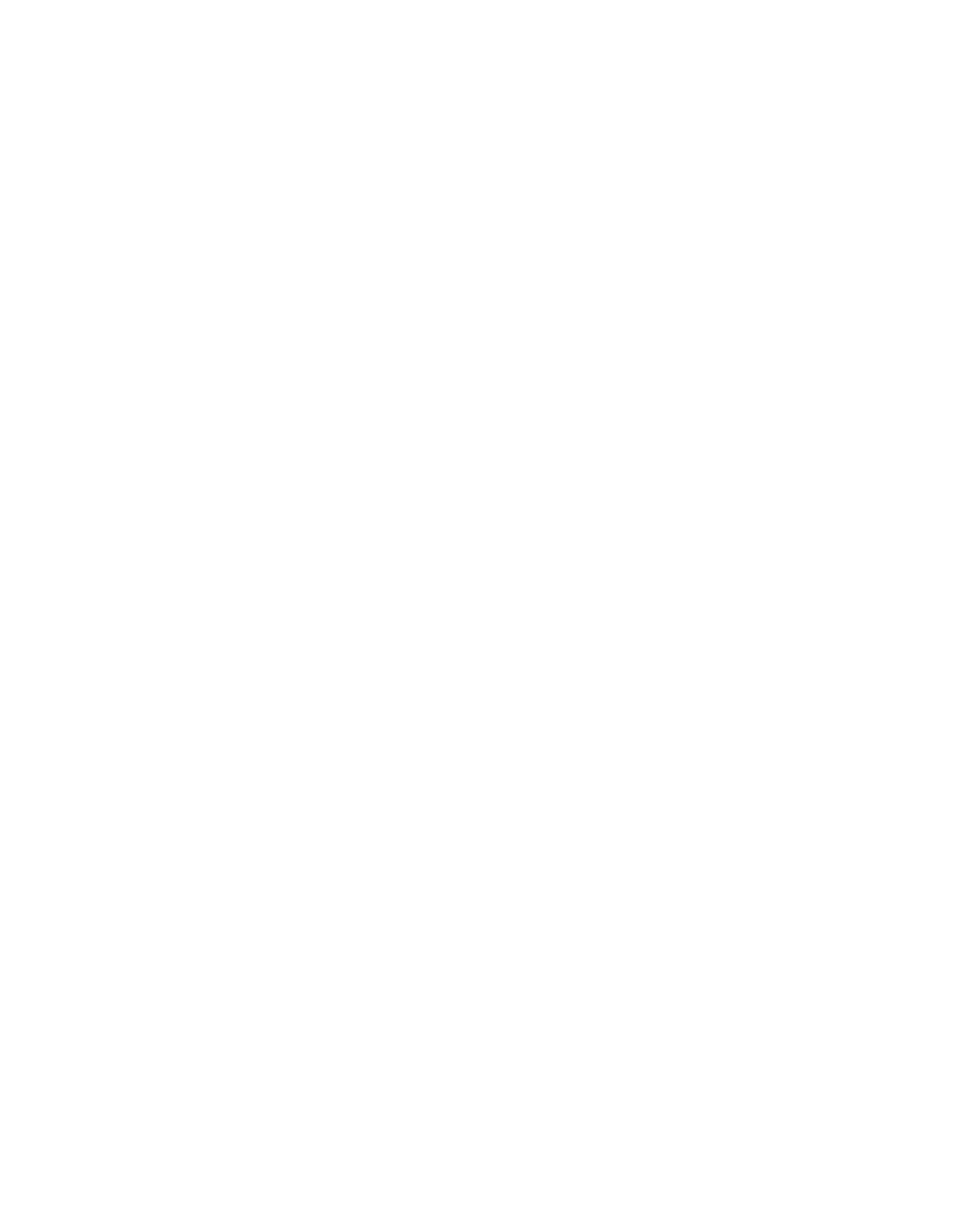REC~~VED
CLERK’S
OFFfCE
BEFORE THE ILLINOIS POLLUTION CONTROL BOARD
STATE
NOV
OF
1 4
ILLINOIS
2003
PEOPLE OF THE STATE OF
)
Pollution Control Board
ILLINOIS,
Complainant,
v.
)
PCB NO. 03-22
)
(Enforcement)
SAINT-GOBAIN CONTAINERS,
)
INC., a Delaware corporation,
Respondent.
NOTICE OF FILING
To:
N. LaDonna Driver
David M. Walter
Hodge Dwyer Zeman
3150 Roland Avenue
P.O. Box 5776
Springfield, IL 62705-5776
PLEASE TAKE NOTICE that on this date I mailed for filing with the Clerk of the Pollution
Control Board of the State of Illinois, a RESPONSE IN OPPOSITION TO RESPONDENT’S
MOTION FOR PROTECTIVE ORDER and MOTION TO COMPEL, copies of which are attached
hereto and herewith served upon you.
Respectfully submitted,
PEOPLE OF THE STATE OF ILLINOIS
LISA MADIGAN
Attorney General of the
State of Illinois
MATTHEW J. DUNN, Chief
Environmental Enforcement/Asbestos
BY
500 South Second Street
Springfield, Illinois 62706
217/782-9031
Dated: November 10, 2003
Litigat
DELBERT D HASCHEMEYER
Assistant Attorney General
Environmental Bureau
CERTIFICATE OF SERVICE
I hereby certify that I did on November 10, 2003, send by First Class Mail, with postage
thereon fully prepaid, by depositing in a United States Post Office Box, a true and correct copy
of the attached NOTICE OF FILING, RESPONSE IN OPPOSITION TO RESPONDENT’S
MOTION FOR PROTECTIVE ORDER and MOTION TO COMPEL
To:
N. LaDonna Driver
David M. Walter
Hodge Dwyer Zeman
3150 Roland Avenue
P.O. Box 5776
Springfield, IL 62705-5776
and the original and ten copies was sent by First Class Mail with postage thereon fully prepaid
To:
Dorothy Gunn, Clerk
Illinois Pollution Control Board
State of Illinois Center
Suite 11-500
100 West Randolph
Chicago, IL 60601
A copy was also sent by First Class Mail with postage thereon fully prepaid
To:
Carol Sudman
Hearing Officer
Illinois Pollution Control Board
600 South Second Street
Springfield, IL 62704
~
Assistant Attorney General
This filing is submitted on recycled paper.
BEFORE THE ILLINOIS POLLUTION CONTROL BOAR~EcE~vED
ILLINOIS,PEOPLE
OF THE STATE OF
))
CL
NOV
FRK’S
:I~4
OFFICE
2003
Complainant,
)
STATE OF ILLINOIS
v.
)
PCB NO. 03-22
Pollution
Control
Board
)
(Enforcement)
SAINT-GOBAIN CONTAINERS,
INC., a Delaware corporation,
)
)
Respondent.
RESPONSE IN OPPOSITION TO RESPONDENT’S
MOTION FOR PROTECTIVE ORDER
NOW COMES the Complainant, PEOPLE OF THE STATE OF ILLINOIS, by LISA
MADIGAN, Attorney General of the State of Illinois, and respectfully requests that Respondent’s
Motion for Protective Order filed herein be denied, and in support thereof states:
INTRODUCTION
On or about October 29, 2003, Respondent, Saint-Gobain Containers, Inc., filed a Motion
for Protective Order seeking a protective order for certain documents Respondent has assembled
for production, in response to a supplemental request to produce, served on Respondent by the
Complainant on or about September15, 2003. Although Respondenthas not made the documents
available for copying, Respondent has made the documents available for inspection, as long as
the specific content of the documents was not copied or otherwise removed. Counsel for the
Complainant has reviewed the documents and found the financial documents consist of two pages
with information on one side. One of the documents appears to be an unaudited tabulation of
balance sheets for several years and the other, income statements for several years. Both
documents are unaudited. The rest of the documents consist of four boxes of glass furnace
operating records for Respondent’s Lincoln facility. There is also a CD which reportedly contains
the glass furnace operating information in graph form.
1
Respondent has not met its burden of establishing a need for a protective order.
Respondent is presenting its Motion for Protective Order pursuant to Sections 101.502(a)
and 101.616(d) of the Illinois Pollution Control Board’s (“Board”) procedural rules (35 III. Adm. Code
101 .502(a) and 101 .616(d).
Section 101.502(a) of the Board’s procedural rules generally provides that the hearing
officer has the authority “to rule on all motions which are not dispositive of the proceedings.” Since
Respondent’s Motion for Protection Order is not a dispositive motion, Section 101.502(a)
authorizes the hearing officer herein to rule on the motion.
Section 101.616(d) of the Board’s procedural rules provides:
(d)
The hearing officer may, on his or her own motion or on the
motion of any party or witness, issue protective orders that deny, limit,
condition or regulate discovery to prevent unreasonable expense, or
harassment, to expedite resolution of the proceeding, or to protect non-
disclosable materials form disclosure consistent with Sections 7 and 7.1 of
the Act and 35 Ill. Adm. Code 130.
Illinois Supreme Court Rule 201(c)(1) provides:
(c)
Prevention of Abuse.
(1)
Protective Orders.
The court may at any time on its
own initiative, or on motion of any party or witness, make a
protective order as justice requires, denying, limiting, conditioning,
or regulating discovery to prevent unreasonable annoyance,
expense, embarrassment, disadvantage or oppression.
A review of Section 101.616(d) and Supreme Court Rule 201 (c) clearly shows that Section
101.616(d) of the Board’s procedural rules is patterned afterSupreme Court Rule2Ol(c). Further,
it is clear that Supreme Court Rule 201(c) forms the basis for the Board’s Rule 101.616(d). Thus,
the court’s observation in
May Centers v. S. G. Adams Printing and Stationery
Co. (App. 5th Dist.
1987)106111. Dec. 891.153,111. App. 3d 1018, 506 N.E.2d 691,
(appeal denied)
113 III. Dec. 1018,
116 III. 2d 561, 515 N.E.2d
111,(certiorari dismissed)108
S.Ct. 1127, 488 U.S. 944, 99 L.Ed. 2d
2
405 “. . . by its own terms Rule 201(c) requires the party seeking a protective order to show good
cause.. .“
is applicable to motions for protective orders under Section 101 .616(d) of the Board’s procedural
rules.
The only allegation in Respondent’s Motion for Protective Order describing the material
Respondent seeks a protective order for is contained in paragraph 3 of the motion which provides:
3.
These documents include confidential financial reports and
confidential glass manufacturing operation logs, the disclosure of which to
certain persons or entities outside such litigation would harm Stain-GobaTh’s
business.
In support of its motion for a protective order, Respondent attaches the affidavit of Wray
C. Hiser which, in reference to the documents Respondent seeks a protective order for, states:
3.
The documents that will be produced include documents that
contain confidential data, such as confidential financial reports and
confidential glass manufacturing facility operation logs, the disclosure of
which to certain persons or entities outside such litigation would harm Saint-
Gobain’s business.
4.
These confidential documents are protected from disclosure
by Saint-Gobain by limiting access to such documents. These documents
are considered confidential, and they are only made available to the limited
number of Saint-Gobain’s . .
An examination of the information provided by Respondent establishes the information is
woefully inadequate to establish a need for a protective order. The only factual information
provided in support of Respondent’s motion is that the documents include financial documents and
glass manufacturing operation logs and that the documents are kept, to some extent, confidential
by the company. There are conclusory statements, i.e., that disclosure would harm Respondent’s
business. There is no description of the financial documents or the type of information contained
in the financial documents. Nor is there any information as to how or why disclosure might harm
3
Respondent’s business. Clearly, Respondent’s motion, on its face, fails to meet the burden
entitling Respondent to a protective order.
II.
Any Protective Order issued must be consistent with the Illinois Environmental
Protection Act and Board rules which establish the criteria for protecting trade secrets and
a procedure for determining if, in fact, information is a trade secret.
Section 101.616(d), in substance being the same as Supreme Court Rule, goes on to state:
orto protect non-disclosable materials from disclosure consistent
with Sections 7 and 7.1 of the Act and 35 III. Adm. Code 130.
Section 7 of the Illinois Environmental Protection Act (415 ILCS 5/7) provides, in relevant
part:
Sec. 7.
(a)
All files, records, and data of the Agency, the Board, and the
Department shall be open to reasonable public inspection and may be
copied upon payment of reasonable fees to be established where
appropriate by the Agency, the Board, or the Department, except for the
following:
(i)
information which constitutes a trade secret;
***
(iv)
information concerning
secret
manufacturing
processes or confidential data submitted by any
person under this Act.
** *
(c)
Notwithstanding any other provision of this Title or any other
law to the contrary, all emission data reported to or otherwise obtained by
the Agency, the Board or the Department in connection with any
examination, inspection or proceeding under this Act shall be available to
the public to the extent required by the federal Clean Air Act Amendments
of 1977 (P.L. 95-95) as amended.
(e)
Notwithstanding any other provisions of this Title, or any other
law to the contrary, any information accorded confidential treatment may-be
4
disclosed or transmitted to other officers, employees or authorized
representatives of this State or of the United States concerned with or for
the purposes of carrying out this Act or federal environment statutes and
regulations; provided, however, that such information shall be identified as
confidential by the Agency, the Board, or the Department, as the case may
be. Any confidential information disclosed or transmitted under this
provision shall be used for the purposes stated herein.
***
(g)
All files, records and data of the Agency, the Board and the
Department shall be made available to the Department of Public Health
pursuant to the Illinois Health and Hazardous Substances Registry Act.
Expenses incurred in the copying and transmittal of files, records and data
requested pursuant to this subsection (g) shall be the responsibility of the
Department of Public Health.
Section 7.1 of the Illinois Environmental Protection Act (415 ILCS 5/7.1) provides, in
relevant part:
(a)
All articles representing a trade secret reported to or
otherwise obtained by the Agency, the Board or the Department in
connection with any examination, inspection or proceeding under this Act,
shall be considered confidential and shall not be disclosed, except that such
articles may be disclosed confidentially to other officers or employees
concerned with carrying out this Act or when relevant to any proceeding
under this Act. In any such proceeding, the Agency, the Board, the
Department or the court shall issue such orders as may be appropriate,
including the impoundment of files or portions of files, to protect the
confidentiality of trade secrets.
(b)
The Board shall adopt regulations under Title VII of this Act
which prescribe: (i) procedures for determining whether articles represent
a trade secret; and (ii) procedures to protect the confidentiality of such
articles. All such regulations shall be considered substantive regulations for
purposes of Section 28 of this Act.
35 III. Adm. Code 130,
et seq.
of the Board’s rules provides the procedure for identification
and protection of trade secrets and other non-disclosable information.
Section 130.100 of the Board’s rules addressing trade secrets and other non-disciosable
information provides, in relevant part, as follows:
5
Sec. 130.100. Purpose and Applicability
(a)
Section 7(a) of the Act provides that all files, records, and
data of the Illinois Environmental Protection Agency, the Board, and DNR
shall be open for reasonable public inspection except for information which
constitutes a trade secret; information privileged against introduction in
judicial proceedings; internal communications of the several agencies; and
information concerning secretmanufacturing processes or confidential data
submitted by any person under the Act. 415 ILCS 5/7(a).
(b)
This Part establishes procedures to identify and protecttrade
secrets and other non-disclosable information.
Section 130.200 of the Board’s rules provides the procedure for initiating a claim that an
article represents a trade secret and provides, in relevant part, as follows:
Section 130.200.
Initiation of a Claim that an Article Represents a
Trade Secret
(a)
The owner of an article may claim that the article represents
a trade secret only by submitting to the State agency the claim letter
required by subsection (b)(1) of this Section at the time the owner submits
the article to the State agency without simultaneously submitting the claim
letter required by subsection (b)(1) of this Section, the article will be
considered a matter of general public knowledge and cannot be protected
as a trade secret.
(b)
The ownerof an article seeking trade secret protection must
submit the following information to the State agency at the time the owner
submits the article to the State agency:
(1)
A claim letter that clearly states the name of the
article, briefly describes the article, and states that
the article is claimed to represent a trade secret, as
defined in 35 III. Adm. Code 101 .Subpart B and the
Act, and
(2)
A copy of the article marked as provided in Section
130.302 of this Part.
(c)
The owner of an article seeking trade secret protection must
submit to the State agency a statement of justification for the claim meeting
the requirements of Section 130.203 of this Subpart. the owner of the article
may submit the statement of justification at the time the owner submits the
article, or at a later time, but in no event later than the time limit established
pursuant to Section 130.202 of this Subpart.
6
Section 130.201 ofthe Board’s rules referenced in Rule 130.200 establishes the information
necessary to claim a trade secret and protect other non-disclosable material:
Section 130.203
Contents of Statement of Justification
A statement of justification must contain the following:
(a)
A detailed description of the procedures used by the owner
to safeguard the article from becoming available to persons
other than those selected by the owner to have access
thereto for limited purposes;
(b)
A detailed statement identifying the persons or class of
persons to whom the article has been disclosed;
(c)
A certification that the owner has no knowledge that the
article has ever been published or disseminated or has
otherwise become a matter of general public knowledge;
(d)
A detailed discussion of why the owner believes the article to
be of competitive value; and
(e)
Any other information that will support the claim.
A review of the foregoing statutory and regulatory provisions referred to in Section
101.616(d) clearly establishes the existence of a comprehensive program for the identification and
protection of certain identified materials. Those provisions also clearly establish that, except for
certain information identified in Section 7 of the Act, it is policy of the State of Illinois that
information be available to the public.
Section 101.616(d) of the Board’s procedural rules requires that any protective order
entered must be consistent with Sections 7 and 7.1 of the Act and 35 Ill. Adm. Code 130. Thus,
it is clear a protective order issued pursuant to Section 101 .616(d):
a.
cannot restrict access by the public to documents which must be
made available to the public pursuant to Section 7 of the Act, i.e.,
emission data.
b.
should not be issued unless the Respondent has met the same
burden of justification required by the Board’s rules, i.e., 35 Ill. Adm.
Code 130.201 and 130.203.
7
c.
should not be issued unless Respondent can show a need that the
protective order will provide a degree of protection over and above
that provided under Sections 7 and 7.1 of the Act and 35 III. Adm.
Code 130.
A.
THE GLASS FURNACE
OPERATING
RECORDS ARE NOT ENTITLED TO PROTECTION
AS TRADE SECRETS, CONFIDENTIAL RECORDS OR ANY OTHER CATEGORY OF
INFORMATION BECAUSE:
1.
The Glass Furnace operating records constitute emission data.
2.
The Glass Furnace operating records are required to be generated
and made available for unconditional inspection and copying
pursuant to Respondent’s operating permit.
As noted earlier, Section 130.110 of the Board’s rules addressing trade secrets and non-
disclosable information provides, in relevant part:
(a)
All emission data reported to or otherwise obtained by the
Illinois Environmental Protection Agency, the Board, or DNR in connection
with any examination, inspection or proceeding under the Act shall be
available to the public to the extent required by the federal Clean Air Act
Amendments of 1977 (P.L. 95-95) as amended 415 ILCS 5/7(c).
***
(c)
In addition to subsection (b) of this Section, information
necessary to determine or calculate emission data, including rate of
operation, rate of production, rate of raw material usage, or material
balance, will be deemed to represent emission data for the purposes of this
Section if the information is contained in a permit to ensure that the permit
is practically enforceable.
The relevant conditions in Respondent’s operating permit provides:
la.
Glass production shall not exceed 425 tons/day.
***
bi.
Emissions of particulate matter, sulfur dioxide, and nitrogen oxides
shall not exceed 12.38, 39.0, and 134.6 lb/hour, respectively, and
shall not exceed 54.2, 156.6, and 539.0 tons/year respectively.
These annual limits are based on a maximum annual glass
production of 142,350 tons/year. Compliance with annual limits shall
be determined from a running total of 365 days of data.
8
ii.
Compliance with the annual emission limitations shallbedetern’iined
by calculating emissions based on a linear relationship between
pound of pollutant emitted per ton of glass produced as established
by performance testing.
***
2ai.
The concentration of particulate matter, sulfur dioxide and nitrogen
oxides in the effluent stream of the furnace shall be measured by an
approved independent testing service as provided below. These
tests shall be conducted, documented, and reported in accordance
with applicable USEPA Reference Test Methods in 40 CRF Part 60.
ii.
Testing shall also be performed within 1 year of a written request for
testing from the Agency, based on a significant change in batch
composition or other significant change in the manner of furnace
operation.
iii.
In addition to other relevant operating parameters, the glass
production rate, type and firing rate of fuel, level of electric boost,
temperature, and excess oxygen level of the furnace gas, shall be
recorded during testing.
***
3a.
The Permittee shall maintain records of the following items, and
such other items as may reasonably be appropriate to allow the
Agency to review compliance with the requirements in Condition 1.
Glass production, ton/day and ton/month
ii.
Batch formulation, including
cullet
iii.
Furnace operating conditions, i.e., heat and energy inputs
iv.
Natural gas consumption, e.g., SCF or therm/month
v.
Fuel oil consumption, e.g., gallon or Btu/month
vi.
Electricity consumption, e.g., KW-hour/month
vii.
Excess oxygen level in the furnace, as measured for routine
production purposes.
b.
These records shall be retained for two years and shall be available
for inspection and copying by the Agency.
Based on Plaintiff’s counsel’s review of the four boxes of documents containing
Respondent’s Glass Furnace operating information, the information contained in the documents
is, in substance, the information Respondent’s operating permit Condition 2ai and 3a requires
Respondent to record and maintain. Further, it is clear that at least some, if not all, of the
9
information in the four boxes Respondent seeks a protective order for constitutes emission data
as that term is defined by 35 III. Adm. Code 130.110. Consequently, that information must be
available for public inspection pursuant to the provisions of the Clean Air Act, the Illinois
Environmental Protection Act and the Board’s rules, thus, cannot be made subject to a protective
order.
Section 3(b) of Respondent’s operating permit requires Respondent to maintain and make
available for copying records which set forth the information contained in the four boxes of
documents for which Respondent seeks a protective order. The Agency’s right to copy those
documents is unconditional, that is to say, the Agency’s right to copies is certainly not conditional
on the Agency agreeing to a protective order. While it is presumably true the Respondent could
assert a trade secret claim, the burden would be on the Respondent pursuant to the Board’s rules
to establish that the information was entitled to protection as a trade secret. This the Respondent
has not done.
B.
RESPONDENT HAS NOT MET THE BURDEN OF JUSTIFICATION REQUIRED BY
BOARD RULES ENTITLING RESPONDENT TO CONFIDENTIAL TREATMENT OF THE
DOCUMENTS.
Section 130.203 of Part 130, Identification and Protection of Trade Secrets and other Non-
Disclosable Information, as noted earlier, specifies the information that must be provided in order
to have information treated as trade secrets or other non-disciosable material. The information that
must be provided includes:
a.
A detailed description of the procedures used to safeguard the
information.
Respondent has not provided any description of the procedure, let alone a detailed
description of the procedure used to safeguard the material.
10
b.
A detailed statement identifying the persons or class of persons to
whom the information or documents has been disclosed.
Responde.nt has not identified the persons or class of persons who have access or who
possess the documents.
c.
A certification that the owner has no knowledge the article has ever
been published or disseminated.
Respondent has provided no such certification.
d.
A detailed discussion of why the owner believes the article to be of
competitive value.
Respondent has not provided any discussion, let alone a detailed discussion, of why the
documents might be of competitive value.
e.
Any other information to support the claim for confidential treatment.
Respondent has not submitted any other information whythedocuments would-be accorded
confidential treatment.
Thus, it is clear Respondent has not met the burden necessary to have the subject
documents, both the furnace and financial records, protected under Section 7 and 7.1 of the Act.
Consequently, the protection of a protective order under Section 101.616(d) of the Board’s
Procedural Rules would be entirely inconsistent with the Environmental Protection Act.
C.
RESPONDENT HAS NOT ESTABLISHED A NEED FOR A PROTECTIVE ORDER OVER
AND ABOVE THE PROTECTION AFFORDED BY SECTION 7 AND 7.1 OF THE ACT, AND THE
BOARD’S RULES GOVERNING TRADE SECRETS AND OTHER NON-DISCLOSABLE
MATERIAL.
As noted earlier, the burden is on the Respondentto establish a need for a protective order.
Further, as noted earlier, the Act establishes a comprehensive system for the identification and
protection of certain information, and further provides that certain information may not be kept
confidential. Consequently, in order to establish a need, Respondent must show a need for some
11
degree of protection not already available. One cannot establish a need for something one already
has. This, Respondent has not done.
THE ILLINOIS FREEDOM OF INFORMATION ACT
In addition to the provisions of the Illinois Environmental Protection Act requiring that
information be available to the public, the Complainant is also subject to the Illinois Freedom of
Information Act (“FOIA”) 5 ILCS 140/1
et seq.
Section 140/1 describes the philosophy of the State with regard to the production of
documents for public inspection, as follows:
1.
Pursuant to the fundamental philosophy of the American
constitutional form of government, it is declared to be the public policy of the
State of Illinois that all persons are entitled to full and complete information
regarding the affairs of government and the official acts and policies of
those who represent them as public officials and public employees
consistent with the terms of this Act. Such access is necessary to enable
the people to fulfill their duties of discussing public issues fully and freely,
making informed political judgments and monitoring government to ensure
that it is being conducted in the public interest.
Section 7 of FOIA sets forth the exemptions to the requirements to disclose information to
the public. The only exemptions which might be applicable to the material Respondent seeks a
protective order for are those set forth in Section 1(a) and (g), which provides:
§7.
Exemptions
(1)
The following shall be exempt from inspection and copying:
(a)
Information specifically prohibited from disclosure by
federal or State law or rules and regulations adopted
under federal or State law.
***
(g)
Trade secrets and commercial or financial
information obtained from a person or business
where the trade secrets or information are
proprietary, privileged or confidential, or where
disclosure of the trade secrets or information may
cause competitive harm, including all information
12
determined to be confidential under Section 4002 of
the Technology Advancement and Development Act.
Nothing contained in this paragraph (g) shall be
construed to prevent a person or business from
consenting to disclosure.
In
Carbondale Convention Centerv. City of Carbondale,
(App. 5tI~Dist. 1993) 185 III. Dec.
405, 245 III. App. 3d 614, N.E.2d 539, the trial court entered an order of dismissal which contained
a gag order, that is, a court order prohibiting the parties from disclosing the terms of the agreement
which resolved their dispute. A reporter for the local newspaper requested a copy of the order
resolving the conflict between the parties. The City of Carbondale refused to produce the order
citing the court’s gag order, claiming the same to be exempt under Section 7(1)(a) of FOIA.
The Court in addressing the claimed exemption under Section 1(a), states:
There is a presumption that public records be open and accessible, subject
only to exemptions that are to be narrowly construed. (Citation omitted.)
Although section 7 of the Act provides an extensive list of exemptions to
disclosure, the burden of proof is on the governmental agency to establish
that the documents in question are exempt from disclosure. (Citation
omitted.) To meet this burden and to assist the court in making its
determination, the agency must provide a detailed justification for its claim
of exemption, addressing the requested documents specifically and in a
manner allowing for adequate adversary testing.” (Citation omitted.)
Defendant denied the interveners’ request just after the trial court entered
the gag order, citing section 7(1 )(a) as an applicable exemption to the Act.
That section provides:
(1)
The following shall be exempt from inspection and
copying:
(a)
Information specifically prohibited from
disclosure by Federal or State law or rules and regulations
adopted pursuant thereto. Ill. Rev. Stat. 1989, ch. 116, par.
207(1)(1).
Defendant asserts that the trial court’s dismissal order strictly
prohibits defendant from disclosing the terms or conditions of the settlement
agreement, and that such an order constitutes State law. Assuming for
purposes of this argument and without so holding that such an order is a
“State law,” we find this position incompatible with the intent of the Act. In
the case at bar, defendant requested the court to impose the gag order.
Therefore, the “State law” defendant asserts as exempting disclosure of the
13
agreement exists, in part, as a result of defendant’s efforts to prevent
disclosure of the agreement. since such an action contradicts the purpose
and intent of the Act under which the exemptions are intended as shields
rather than swords, we hold section 7(1)(a) does not apply as a possible
exemption in this case.
It is apparent from the foregoing discussion that an agreed protective order would notjustify
the Agency from declining to provide documents for public inspection under FOIA because of the
exemption contained in condition 1(a) of Section 7 of FOIA, 5 ILCS 140/7(a). Further, it is clear
that if the Agency were to decline to produce information because such information constitutes a
trade secret under Section 7(g), it must have a detailed explanation of why the material constitutes
a trade secret. The detailed justification is the kind of information required by the Board rules to
justify the protection of information as trade secrets. Thus, it is clear that the burden of proof
imposed by Section 101 .616(d) of the Board’s procedural rules, Section 7 and 7.1 of the Illinois
Environmental Protection Act, the Board rules governing the identification and protection of trade
secrets and other non-disclosable information (35 III. Adm. Code Part 130), and the Illinois
Freedom of Information Act is the same. Respondent must provide a detailed justification for the
protective order it seeks. Further, it is clear that Respondent has not provided that justification.
To provide such as justification, Respondent must prove the four boxes of Glass Furnace operating
information do not constitute emission data as defined by the Board rules and must further prove
that such information is trade secret information or otherwise entitled to protection. Based on the
information to date, it appears unlikely the Respondent will be able to do so. With regard to the
claimed financial information, the Respondent must provide a detailed justification for the
information to be treated as a trade secret under the Illinois Environmental Protection Act and FOIA
and, in order to be entitled to a protective order, must show that such an order is necessary to
provide protection that is not provided for trade secrets and other non-disclosable information under
the Illinois Environmental Protection Act. This the Respondent has not done.
14
IN CONCLUSION
In conclusion, Respondent’s Motion for a Protective Order should be denied for the
following reasons:
1.
Respondent fails to meet its burden to show that there is a need for any protective
order.
2.
Respondent fails to establish that the information Respondent seeks a protective
order could not be protected as a trade secret or other non-disclosable material under Section 7
and 7.1 of the A or the Board’s rules for identification and protection of trade secrets and other non-
disclosable information (35 Ill. Adm. Code, Part 130).
3.
Respondent has failed to showthat notwithstanding a protective order, Complainant
would be required to make the information available anyway, pursuant to the provisions of the
Freedom of Information Act (415 ILCS 140/1
etseq.).\
4.
Based on information available to Complainant, it appears that almost all of the
material Respondent seeks a protective order for constitutes emission data and could not be the
subject of a protective order consistent with Section 7 and 7.1 of the Act and the Board’s rules
effective thereunder.
15
WHEREFORE, for the foregoing reasons, Complaint respectfully requests the hearing
officer deny Respondent’s Motion for a Protective Order.
Respectfully submitted,
PEOPLE OF THE STATE OF ILLINOIS,
LISA MADIGAN,
Attorney General
of the State of Illinois,
MATTHEW J. DUNN, Chief
Environmental
Enforcement/Asbestos
Lifiga~,o~~~
DEL~EI~TD. H~SCHEMEY
Assistant Attorney General
Environmental Bureau
500 South Second Street
Springfield, Illinois 62706
217/782-9031
Dated:
/i/,’~7o~
16
BEFORE THE ILLINOIS POLLUTION CONTROL BOARD
CLERK’S
F~p
PEOPLE OF THE STATE OF
)
NOV 1 4 2003
ILLINOIS,
)
Pollution Control Boar
Complainant,
v.
)
PCB NO. 03-22
)
(Enforcement)
SAINT-GOBAIN CONTAINERS,
INC., a Delaware corporation,
)
Respondent.
MOTION TO COMPEL
Now comes the Complainant, PEOPLE OF THE STATE OF ILLINOIS, by Lisa Madigan,
Attorney General of the State of Illinois, and respectfully requests the Hearing Officer enter an
order ordering Respondent to produce and copy the documents requested in Complainant’s
Supplemental Request for documents, and in support thereof, states:
1.
That on or about September 15, 2003, Complainant served on Respondent
Complainant’s First Setof Supplemental Interrogatories and SupplementalRequestforProduction.
2.
On or about October 13, 2003, Respondent served its response to Complainant’s
Supplemental Requestfor Production and Complainant’s First Set of Supplemental Interrogatories.
3.
In its response to Complainant’s Request for Production, Respondent, after
objecting, responds as follows:
a.
Requestto Produce No. 2 requests income tax returns forthe
entity identified in Supplemental Interrogatory No. 2.
In response to
Interrogatory No. 2, Respondent identifies Saint-Gobain Corporation and
Certain Teed Corporation, both of which are headquartered in Valley Forge,
Pennsylvania, as the entities filing income tax returns reflecting the income
of Respondent.
Respondent, in response to Request No. 2, states it does not
have copies of the income tax returns in its possession.
b.
Request to Produce No. 3 requests annual reports prepared
by the entities identified in the Supplemental Interrogatories Nos. 2, 4 and
1
5 which reflect, relate to, or report on the operations of Saint-Gobain
Containers, Inc., or Ball Foster Glass Container Co., L.L.C., for the years
1994 through the present.
Respondent, in response to Request No. 3, states it has none
it its possession or control.
c.
Request to Produce No. 4 requests Respondent to produce
copies of all audited and/or unaudited financial reports prepared by or on
behalf of Saint-Gobain Containers, Inc., Ball-Foster Glass Container Co.,
L.L.C. for Saint-Gobain Corporation, Compagnie de Saint-Gobain or any
other parent or subsidiary corporation for this calendar year through the
present.
Respondent responds to Request No. 4 stating unaudited
financial reports for Ball-Foster Glass Container, L.L.C., which later became
Saint-Gobain Containers, L.L.C., which later became Saint-Gobain
Containers, Inc., for review and inclusion in the financial reports for Saint-
Gobain Corporation will be provided upon entry of a protective order.
d.
Requestto Produce No. 5 requests copies of all 10(k) reports
filed with SEC by Saint Gobain Corporation, Compagnie de Saint Gobain
and any parent or subsidiary corporations of Saint-Gobain Containers, Inc.,
and Ball-Foster Glass Container Co., L.L.C. for the calendar years 1994
through the present.
Respondent responds that it has none in its possession.
e.
Request to Product No. 6 requests the production of
numerous documents relatedto the operation of Respondent’s glass-meFthig
furnace.
Respondent responded to Request No. 6 by saying available
furnace records which date back to 1997 will be provided upon the entry of
a protective order.
4.
With regard to the documents identified in response to Request to Produce No. 4
and 6, Respondent has indicated it will produce those documents for inspection and copying upon
the entry of a protective order. Respondent has indicated there are approximately four boxes of
documents.
5.
The undersigned Assistant Attorney General has briefly reviewed the material
Respondent has indicated it will provide upon entry of a protective order and, although not allowed
2
to copy or make notes regarding the substance of the contents, did observe two sheets of papers
purporting to be the financial documents and four boxes of documents which appear to be glass
furnace operating records.
6.
Complainant has filed herein a Response to Respondent’s Motion for Protective
Ordersetting forth the reasons Respondent is not entitled to a protective order which response is
incorporated herein by reference.
7.
A review of Respondent’s response to Complainant’s Request to Produce Nos. 2,
3, 4, and 5 appear incredible. Respondent is essentially asking Complainant to accept as credible
that it operates and has operated a multi-million dollar company over the past five years without
copies of income tax returns filed reflecting its operation, without annual reports which reflect or
relate to its operation, without copies of audited or financial reports prepared by or on behalf of
Respondent or any parent or subsidiary committee, or any 10(k) reports for Respondent, its
subsidiary or parent corporation. In short, it appears Respondent is asking us to believe that
Respondent has been operating its multi-million dollar operation over the past few years without
generating and maintaining hardly any financial reports. This, Complainant does not find as
credible.
3
WHEREFORE, Complainant respectfully requests the Hearing Officer issue an order
ordering Respondent to produce and copy the records being held in their counsel’s office and
further that they produce all of the financial documents requested.
Respectfully submitted,
PEOPLE OF THE STATE OF ILLINOIS,
LISA MAD IGAN,
Attorney General
of the State of Illinois,
MATTHEW J. DUNN, Chief
Environmental
Enforcement/Asbestos
Litigatio
ivision
BY:
• DELBERT ‘.
SCHEMEYER
Assistant Attorney General
Environmental Bureau
500 South Second Street
Springfield, Illinois 62706
217/782-9031
Dated:___________
4


